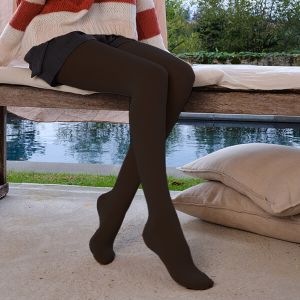How to take care of a compression product so that it lasts longer?

Compression products, i.e., compression tights, stockings, and socks, are a group of medical products with a special purpose.
True to their name, their most important feature is the controlled compression of the limb, which improves the return of venous blood from the lower limbs towards the heart, thus preventing oedema and alleviating feelings of tiredness and heaviness of legs.
Due to their effectiveness, these products are used in compression therapy for the prevention of venous thrombosis in general. To be truly effective, however, they must not only be properly selected but also properly worn.
Skilful care of them is also very important. Observing the rules concerning washing and wearing them additionally increases the effectiveness of the products, and significantly extends their lifespan.
Compression products - what is worth knowing about them?
Compression materials available in the form of tights, stockings, and knee-length socks are an easy and safe way to combat leg swelling and other symptoms of venous insufficiency. Due to their advantages, they are also used in the prevention of venous thrombosis.
Their use is also recommended to pregnant women and patients after injuries and surgeries which result in leg swelling. Although very effective in their action, they cannot be treated as the only method of eliminating the mentioned problems.
The decision on the need to wear compression products should always be consulted with a doctor. It is the doctor who should choose the right compression class, provide information on how to adjust their size, as well as rule out any contraindications to their use (including allergy to materials used in the production process, inflammatory conditions of the skin, subcutaneous tissues, and muscles, and atherosclerosis). Only properly selected products are effective and safe for the patient's health.
Tights, stockings, or maybe knee-high socks? Which type of products to choose from?
There are many compression products available in medical shops and pharmacies. They vary in terms of price, quality, and compression class. You can choose between tights, stockings, and knee-high socks.
Due to the comfort of wearing, knee-high socks are the most popular among patients. It is worth remembering, however, that it is not the patient's preferences that should determine the choice of a particular product, but its effectiveness.
Therefore, the decision concerning the purchase of a specific product should be consulted with a doctor. While in the case of swelling and changes occurring below the knee, below knee socks will be sufficient, in the case of people with swelling and varicose veins already below the knee and on the thigh - knee socks will prove to be insufficient, and it will be necessary to use stockings or tights.
The purchase of a good compression product should be preceded by the measurement of the limb in specific points located at its entire height. Measurements should be taken when swelling has not yet set in, and it is best done in a standing position. Therefore, the optimal time is in the morning, when the limbs are rested.
How to wear compression products?
Compression garments should be used as directed by your doctor. They should be put on in the morning, before swelling sets in, and to get the most out of them, they should be worn throughout the day, only being removed at night. It is often necessary to wear them for life.
Because of this frequent use, the compression products chosen should be of high quality, so that if they are well cared for, they will last a long time.
To be effective, they must not only be worn systematically but also regularly replaced with new ones. On average every 3-6 months. Thanks to this the level of their compression will be correct all the time.
Sometimes, as a result of improper fitting and non-compliance with care instructions, compression products need to be replaced more often. One way to avoid this is to take good care of them.
Why should compression products be cared for, and how should this be done?
When properly fitted and cared for, compression garments not only improve the patient's comfort, while protecting his or her health, but they can also look quite good, becoming a visually attractive part of clothing.
For this to happen, however, they must first of all, be well-fitted. If they are too tight or too bulky, not only will they not fulfill their function, but they will also look unsightly. In addition, too much pressure may aggravate health problems.
Proper care is also important for their appearance and effectiveness. It is absolutely necessary for this respect to follow the recommendations of the manufacturer of selected products, relating both to the manner of washing and putting them on. Therefore, before using them, it is necessary to read the information enclosed with the package.
Compression garments should usually be washed at a temperature not exceeding 40°. However, this is not a rule. Each manufacturer may recommend slightly different methods of cleaning and drying, which the customer should adhere to.
Do not forget that the lifespan of this type of product is significantly prolonged if the instructions for putting them on are followed (do not use lotion on the skin of the lower limbs before putting them on, as this will make it difficult to put the products on properly.
Special glides, attached to compression products, will make the process much easier), as well as proper care for the skin of legs. Dry skin, especially in the heel area, may pull compression garments tight, leading to their visible damage.
The situation is similar in the case of too long or carelessly filed fingernails and toenails. The result is not only the deterioration of tights and stockings but even their complete destruction and the need to buy new ones. Well-groomed feet significantly facilitate the care of compression products, which in turn translates into their extended life and greater effectiveness.
Bibliography
- How to use compression products correctly? Date of access: 13.01.2019.



















